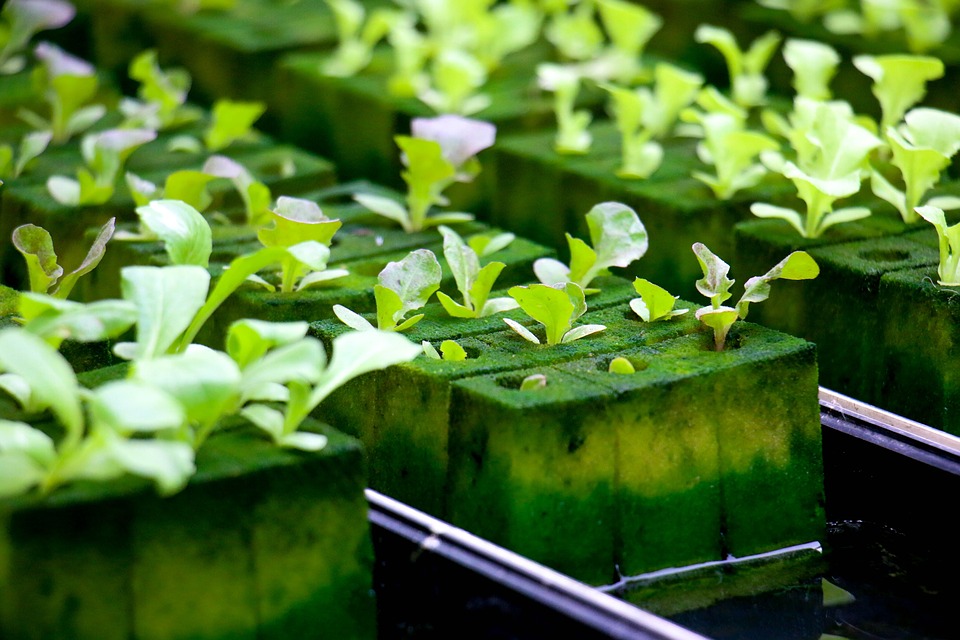Introduction
Hydroponics is a revolutionary gardening technique that allows you to grow plants without soil. It harnesses the power of water and nutrient solutions to create an optimal environment for plant growth.
Benefits of Hydroponics
Hydroponics offers numerous advantages over traditional soil-based gardening. Firstly, it allows for faster growth and higher yields. With direct access to nutrients, plants can grow up to 50% faster in hydroponic systems compared to conventional methods. The controlled environment also reduces the risk of pests and diseases, meaning fewer chemicals are needed to maintain plant health.
Moreover, hydroponics uses up to 90% less water than traditional agriculture. The recirculating systems minimize water wastage and enable efficient nutrient absorption by plants. This eco-friendly approach saves both resources and money in the long run.
Additionally, since hydroponic setups can be placed indoors, you can enjoy year-round gardening regardless of the weather conditions. The controlled environment allows you to cultivate a wide variety of plants, from leafy greens and herbs to flowers and fruiting crops.
Getting Started with Hydroponics
Before diving into hydroponics, you’ll need some essential equipment and knowledge. Begin by selecting a suitable hydroponic system, such as deep water culture, nutrient film technique, or aeroponics, depending on your space and preferences. Set up the system following the manufacturer’s instructions, ensuring proper lighting, ventilation, and nutrient circulation.
Next, choose the right plants for hydroponic cultivation. Leafy greens like lettuce, spinach, and kale thrive in hydroponic environments. Herbs like basil, mint, and parsley also do well. Alternatively, you can experiment with tomatoes, peppers, or strawberries for larger, fruiting crops.
Once you’ve determined your plants, it’s time to prepare the nutrient solution. Hydroponics relies on a balanced blend of essential minerals to nourish the plants. You can either purchase pre-made nutrient solutions or create your own using various hydroponic nutrient mixes available in the market.
Finally, sow your seeds or transplant seedlings into the hydroponic system and monitor their growth closely. Remember, hydroponics requires careful attention to maintain appropriate pH levels, nutrient concentrations, and water quality. Regular monitoring, testing, and troubleshooting will help you achieve optimal results.
Harvesting and Enjoying the Fruits of Your Labor
As your hydroponic garden flourishes, it will soon be time to harvest your crops. Leafy greens can be harvested by selectively picking outer leaves, allowing the plants to continue growing. For fruiting crops like tomatoes, peppers, or strawberries, simply pluck the ripe fruits as they mature. Harvesting at the peak of ripeness ensures the best flavor and nutritional value.
Once harvested, it’s time to savor the delicious flavors of your hydroponic bounty. There’s nothing quite like the taste of homegrown produce, particularly when you know it’s free from harmful pesticides and chemicals. Use your freshly picked herbs and vegetables to whip up healthy salads, aromatic sauces, and flavorful soups. Share the joy of your garden with friends and family, inspiring them to unleash the power of hydroponics in their own homes.
FAQs
Q: Is hydroponics suitable for beginners?
A: Absolutely! Hydroponics can seem intimidating at first, but with proper research and guidance, beginners can quickly grasp the basics and start growing their own successful hydroponic gardens.
Q: What is the ideal pH level for hydroponic systems?
A: The optimal pH range for hydroponics usually falls between 5.5 and 6.5. Regularly monitoring and adjusting pH levels helps ensure nutrient uptake and healthy plant growth.
Q: Can I use tap water for hydroponics?
A: It depends on the quality of your tap water. Some tap water contains high levels of minerals or chlorine, which can negatively impact hydroponic systems. Using a water filter or allowing tap water to sit for 24 hours can help remove chlorine, but for optimal results, consider using distilled or reverse osmosis water.
Q: How often should I check nutrient levels in my hydroponic system?
A: Monitoring nutrient levels is crucial for maintaining a healthy hydroponic garden. Depending on the system and plant requirements, it is recommended to check nutrient levels at least once a week and adjust accordingly.




